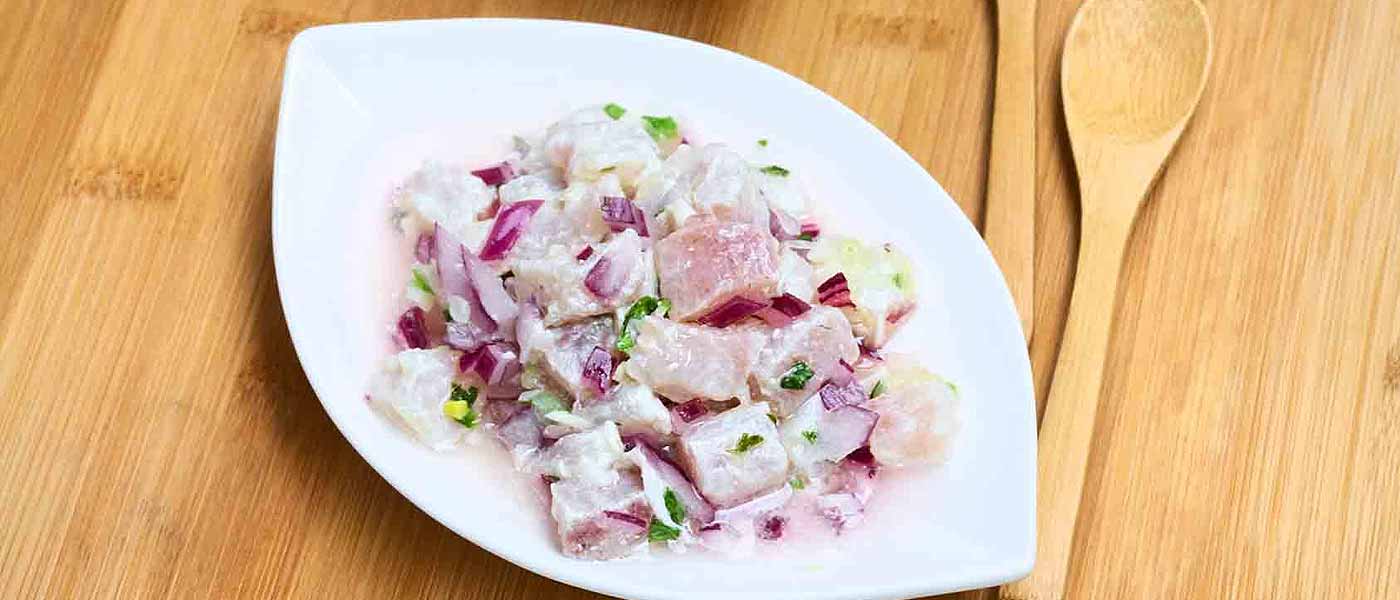
Cook Time 30 minutes
Have you seen my latest vlog? Though most would think of this dish as an appetizer, for Filipinos it is more commonly used as a side dish during beer-drinking sessions, referred to as “pulutan“. Its preparation is different too! After all, if most ceviche recipes are normally soaked in citrus juices, kinilaw is rather soaked in vinegar. Overall
Let me know in the comments below.
But YES — the best part about this kinilaw recipe is that it is so EASY to prepare and it doesn’t involve cooking at all! There is really no need to put up a fire, and any cooking-challenged individual won’t have a hard time perfecting this dish either.
Nutrition Information:
Yield:
4
Serving Size:
1
Amount Per Serving: Calories: 348Total Fat: 9gSaturated Fat: 3gTrans Fat: 0gUnsaturated Fat: 4gCholesterol: 84mgSodium: 639mgCarbohydrates: 15gNet Carbohydrates: 8gFiber: 1gSugar: 7gProtein: 46g
• • •
Some additional tips to ensure that you make the best kinilaw is to ensure that you acquire FRESH fish. It’s also important that you maintain a good ratio between the vinegar and the fresh fish; but no worries because the kinilaw recipe that I have below will give you that perfect ratio. Enjoy!
Ingredients
- 500 grams fresh yellowfin tuna fillet, cut into cubes (it’s best to use labahita or Japan Surgeonfish, but yellowfin tuna should do; you can also use deboned bangus or milkfish, or tanigue also called as Spanish mackerel)
- 3/4 cup vinegar (for washing)
- 1/3 cup vinegar or spiced vinegar if you have one
- 1 red onion chopped
- 2 tablespoons of ginger, sliced into fine strips or small cubes
- 4 tablespoons of Filipino calamansi (you can also use lime or lemon as a substitute)
- Salt and freshly ground black pepper to taste
- 3 pieces Thai chili or bird’s eye chili, chopped (optional)
- 1 tablespoon of sugar (optional)
- 1 tomato, diced (optional)
Instructions
- Prepare all of the ingredients.
- Get a bowl and combine the cubed fish and the 3/4 cup vinegar. Mix them well and let them stand for 2 minutes. Afterward, drain the vinegar while slightly squeezing out the fish cubes. (This ‘washing’ procedure will help reduce the fishy smell).
- Now, combine all the remaining ingredients. Gently toss until all are well blended.
- Cover and place inside the fridge for at least 30 minutes. (It’s fine even if you chill it for more time, but too much might ‘overcook’ the fish. The maximum time I would say is 3 hours!).
- Serve chilled. Share and enjoy with a pairing of beer!
(The nutritional values indicated are the total estimates for the whole serving yield).
Kinilaw is considered an appetizer much like Latin America’s ceviche or seviche (you can think of it as the Filipino version of ceviche). In fact, there are a lot of ceviche variants from all over the world but this version from the Philippines is something that you must try.
» TRIVIA: The terms kilawin and kinilaw are used interchangeably — but to be more precise, the former is used to refer to a kinilaw-style dish in which the ‘meat’ has already been cooked by heat, whereas the latter is the kind of dish that makes use of raw meat or ingredients like fish.
.
For the sake of uniformity, I will use the term kinilaw for the rest of this post.
Rest assured, both of these processes will ‘cook‘ the seafood because the acid will change its protein structure. If you ask me, it’s actually an amazing transformation when you see the fish change from translucent pink to opaque white! Additionally, I like the Filipino kinilaw recipe better than ceviche since it takes away more of the ‘fishiness’.





